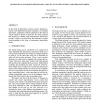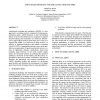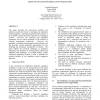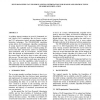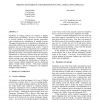WSC
2007
15 years 3 months ago
2007
In the study of physiologic systems control, lumped parameter and differential equation techniques are standard approaches. Application of these techniques to the study of oxygen ...
WSC
2007
15 years 3 months ago
2007
This paper presents the case that education in the 21st Century can only measure up to national needs if technologies developed in the simulation community, further enhanced by th...
WSC
2007
15 years 3 months ago
2007
Co-design modeling is considered key toward handling the complexity and scale of network systems. The ability to separately specify the software and hardware aspects of computer n...
WSC
2007
15 years 3 months ago
2007
Agent-based modeling and simulation (ABMS) is a new approach to modeling systems comprised of autonomous, interacting agents. ABMS promises to have far-reaching effects on the way...
WSC
2007
15 years 3 months ago
2007
This paper describes the motivations, methods, and solution concepts for the use of ontologies for simulation model integration. Ontological analysis has been shown to be an effec...
WSC
2007
15 years 3 months ago
2007
For many years discrete-event simulation has been used to analyze production and logistics problems in manufacturing and defense. Commercial-off-the-shelf Simulation Packages (CSP...
110
Voted
WSC
2007
15 years 3 months ago
2007
As military interest continues to grow for Unmanned Aerial Vehicle (UAV) capabilities, the Air Force is exploring UAV autonomous control, mission planning and optimization techniq...
WSC
2007
15 years 3 months ago
2007
Simulation of existing systems can reinforce a Subject Matter Expert’s gut feelings. However, it is more difficult to develop intuition for proposed systems, particularly when c...
102
click to vote
WSC
2007
15 years 3 months ago
2007
Since its beginning, simulation has been used to study complex systems in order to infer on their future behavior, in this field several applications have been made using it as of...
131
click to vote
WSC
2007
15 years 3 months ago
2007
Simulation of dynamic complex systems—specifically, those comprised of large numbers of components with stochastic behaviors—for the purpose of probabilistic risk assessment f...
